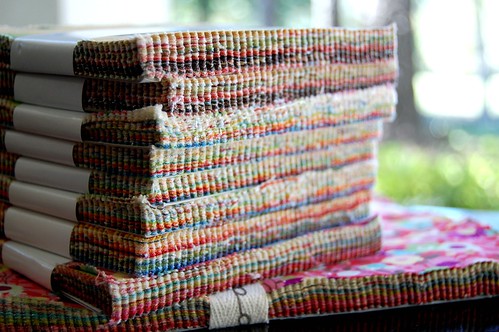Charm of Tam O Shanter Hats
Headwear has long played a crucial role in fashion, reflecting cultural heritage and personal expression. One particular type stands out, capturing the essence of Scottish tradition while also adapting to contemporary trends. This article delves into its origins, significance, and the various ways individuals can incorporate it into their wardrobes today.
Rich in character, this unique accessory is more than just a piece of clothing; it symbolizes a connection to Scotland’s vast landscape and storied past. Its distinctive design has made it a favorite among enthusiasts, offering both functionality and flair. Understanding its evolution allows admirers to appreciate how it became a beloved staple for many.
From festive occasions to everyday wear, this remarkable headpiece demonstrates versatility that transcends time. Different variations have emerged, allowing for personal customization that speaks to one’s individual style. As we explore further, we will examine its key features, wearing techniques, and ways to honor its legacy while making it a part of modern attire.
Origins of the Tam O’Shanter Hat
The distinctive cap has an intriguing lineage that reflects cultural influences, craftsmanship, and social significance. It serves as a bridge between traditional attire and modern fashion, embodying elements that speak to both regional identity and broader stylistic trends.
- Rooted in Scottish heritage, this cap has been associated with rural life and labor.
- Worn by both men and women, it symbolizes a connection to Scottish folklore and community spirit.
- Its name is derived from a character in a famous poem written by Robert Burns, highlighting its literary significance.
Over time, variations emerged, with different materials and colors reflecting individual tastes and regional styles. The cap’s design has evolved, yet it retains its charm and practicality.
- Initially crafted from wool or tweed for durability.
- Popularized in the 18th century among the working class.
- Recognized today in both formal and casual settings, transcending its agricultural roots.
This headwear continues to represent a rich tradition, bridging the past with contemporary fashion, making it a beloved symbol within and beyond Scotland.
Key Features of the Tam O’Shanter
This traditional headwear is characterized by several distinctive elements that define its unique charm and cultural significance. Each feature contributes to its overall appeal and functionality, making it a popular choice in various settings.
Distinctive Characteristics
- Pom-Pom: A prominent feature, this decorative ball sits atop the cap, often in contrasting colors, adding a playful touch.
- Flat Crown: The design includes a broad, flat crown that provides a snug fit while allowing for comfort.
- Wide Brim: The accessory typically features a wide, flexible brim, which can be styled up or down to suit the wearer’s preference.
- Tartan Patterns: Commonly crafted from wool or acrylic, many versions showcase beautiful tartan designs, reflecting regional heritage.
Materials and Construction
Various fabrics are employed in creation, with wool being the most traditional choice, known for warmth and durability. Some modern iterations use synthetic fibers to enhance resilience and ease of care.
- Wool: Renowned for insulation and moisture-wicking properties.
- Acrylic: A popular alternative that offers a lightweight option, often easier to maintain.
- Craftsmanship: High-quality stitching and attention to detail ensure longevity and style coherence.
These attributes not only enhance the aesthetic quality but also make this headgear versatile for various occasions, from casual outings to formal events.
Cultural Significance in Scotland
This distinctive headgear holds a special place within Scottish culture, representing deep-rooted traditions, regional pride, and a connection to national identity. Its presence goes beyond mere fashion; it tells a story of heritage and communal values cherished throughout the ages.
Symbol of Identity
Within Scotland, this headpiece is more than just an accessory. It embodies various aspects of personal and communal identity:
- Serves as a marker of Scottish nationality, especially during celebrations and national holidays.
- Often linked to specific regional affiliations, showcasing unique styles and colors that represent different areas.
- Functions as a statement piece during traditional events, including parades, weddings, and festivals.
Artistic Expression
This headgear also plays a role in the realm of art and craftsmanship:
- Crafted by skilled artisans, each piece often reflects intricate designs and quality materials.
- Many choose to personalize their version, adding unique embellishments or colors, highlighting individuality.
- Represents a fusion of contemporary and traditional styles, showing how fashion evolves while retaining cultural roots.
Ultimately, this iconic headpiece continues to resonate deeply within Scottish society, reinforcing a sense of belonging and cultural awareness for both locals and those who admire its legacy.
Iconic Examples in Fashion History
Throughout eras, certain headwear has transcended mere utility to become symbolic elements of culture and personal expression. These remarkable pieces not only reflect social standing but also embody artistic and creative innovations within their periods. The significance of these unique accessories often evolves, influencing style choices and inspiring contemporary designers.
Historical Significance
One notable instance is the use of traditional bonnets, which varied greatly across regions and social classes. Each variant served a distinct purpose while also showcasing the craftsmanship behind them. By analyzing these forms, one can trace how societal changes affected fashion trends.
Modern Adaptations
In recent decades, some designs have experienced a renaissance, finding their way into high-fashion collections. Designers often reimagine classic forms, blending them with modern aesthetics to create striking statements on today’s runways.
| Example | Era | Influence |
|---|---|---|
| Bonnets | 18th Century | Status symbol of femininity |
| Bowler | 19th Century | Working class to gentleman’s accessory |
| Fedora | 20th Century | Icon of sophistication and rebellion |
| Cowboy Hat | 20th Century | Cultural representation of American identity |
Modern Variations and Trends
Recent years have witnessed a shift in the perception and design of traditional headwear, celebrating unique expressions of individuality while paying homage to classic elements. This evolution showcases how timeless designs can be reimagined to resonate with contemporary fashion preferences.
Innovative materials are now being utilized, ranging from luxurious wools to lightweight synthetic blends, allowing for diverse seasonal adaptations. Bold colors and intricate patterns have also gained traction, enabling wearers to make striking statements. The incorporation of embellishments like pins or patches creates a personalized touch, reflecting individual style.
Furthermore, current trends have embraced sustainability, with many manufacturers focusing on eco-friendly practices and materials. This movement not only appeals to environmentally conscious consumers but also influences the overall aesthetic by encouraging more organic and earthy designs. Functionality is another crucial aspect, as modern designs often include features that enhance comfort and versatility, making them suitable for various occasions.
Ultimately, these developments illustrate a dynamic merger of tradition and innovation, ensuring that this beloved piece of headgear remains relevant in today’s fashion landscape.
How to Style Your Tam O’Shanter
Crafting a distinguished look with this iconic headwear involves thoughtful combinations that reflect both traditional charm and modern flair. Elevating your ensemble with such an accessory is an art that balances color, texture, and personal expression.
When considering outfits, pairing this unique piece with tailored outerwear, such as a fitted blazer or a classic trench, can instantly elevate your look. For a more casual vibe, layering it over a cozy sweater or a chic cardigan adds warmth and style.
Colors play a significant role in making a statement. Opt for shades that complement your complexion while also harmonizing with the rest of your attire. Bold, vibrant hues can evoke playful energy, while muted tones tend to exude elegance.
Accessories should not be overlooked. Incorporating scarves, brooches, or eye-catching jewelry can enhance the overall aesthetic and create a cohesive ensemble. Consider materials and patterns that resonate with your headwear to establish unity throughout your outfit.
Finally, confidence is key. Wearing this distinctive piece with assurance will not only enhance your appearance but also allow your personality to shine through. Embrace this charming accessory and showcase your individuality with pride.
Q&A: Tam o shanter hat
What is the significance of a “kilt” in “Scottish traditional” attire?
A kilt is a symbol of Scottish heritage and pride, traditionally worn by men in Highland regiments and during formal occasions. It is often made from woolen tartan and represents a clan’s colors and history, making it a key piece of traditional Scottish attire.
What is a “Scottish tam o’ shanter,” and how does it differ from a “beret”?
A Scottish tam o’ shanter, or tammy hat, is a traditional Scottish bonnet made from wool, often featuring a pom-pom, known as a toorie, on top. Unlike a beret, which is usually round and flat, the tam o’ shanter is fuller and often crafted from tartan fabric, making it uniquely Scottish.
Where can I find an “authentic tam” made of “wool blend” for a “Highland” look?
Authentic Scottish tams made of wool blend can be found in specialty stores that offer Highland attire or online stores focused on Scottish products. Look for brands that emphasize traditional craftsmanship and tartan patterns to achieve an authentic Highland look.
How does a “tartan kilt” represent a “symbol of Scottish” heritage?
A tartan kilt represents Scottish heritage as each tartan pattern is associated with specific clans, regions, or historical Scottish events. The colors and patterns of a tartan hold cultural significance, symbolizing a connection to Scottish history and ancestry.
What is a “toorie” on a “Scottish tam o’ shanter hat,” and why is it important?
The toorie is the pom-pom found on top of a Scottish tam o’ shanter hat, traditionally made from the same wool as the hat. It adds a distinct touch to the tam, making it easily recognizable and adding to its cultural significance as a piece of traditional Scottish attire.
How does the “Black Watch” tartan relate to “Scottish kilt” tradition?
The Black Watch tartan is a dark green, black, and blue pattern associated with the historic Black Watch regiment of Scotland. It is one of the most recognized tartans and represents Scottish military history, making it a popular choice for kilts among those honoring Highland heritage.
What makes the “Scottish tam” a “fashionable” “winter hat” option?
The Scottish tam is a fashionable winter hat option due to its warm wool construction and classic design. It provides both style and insulation, especially in colder months, making it a functional yet stylish accessory with cultural appeal.
How does a “plaid” “tartan tam” embody “traditional Scottish bonnet” style?
A plaid tartan tam embodies traditional Scottish bonnet style through its use of authentic tartan patterns, representing various Scottish clans or regions. Its rounded shape and wool material give it a classic look that reflects traditional Scottish headwear.
What role did the “Scottish bonnet” play in “Celtic” history?
The Scottish bonnet, including styles like the tam o’ shanter, was widely worn by Highlanders and associated with Celtic identity. These bonnets represented Scottish pride and were often adorned with clan-specific colors, playing a key role in Scottish and Celtic history.
Why is “acrylic wool” commonly used in “Scottish caps” and “tam hats”?
Acrylic wool is commonly used in Scottish caps and tam hats as it provides warmth and durability while being more affordable than pure wool. Acrylic wool mimics the appearance of traditional wool, making it ideal for creating fashionable yet practical Scottish-inspired headwear.



